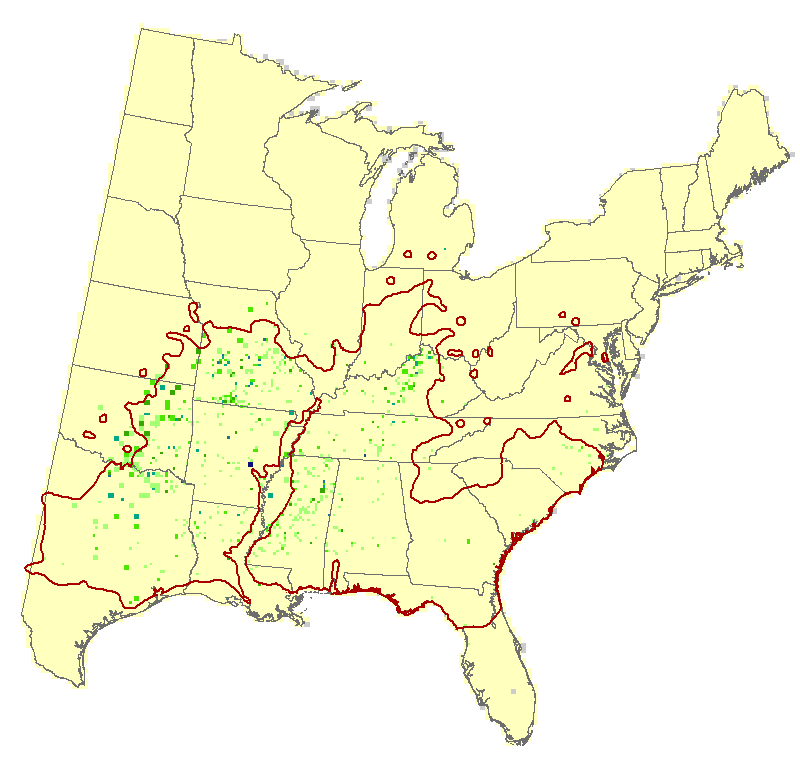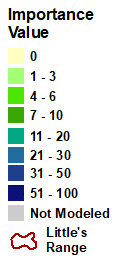Shumard oak (Quercus shumardii)
Model Reliability: Low
| GCM SCENARIO | % Area Occ | Ave IV | Sum IV | Future/Current IV |
|---|---|---|---|---|
| Actual | 2.2 | 3.9 | 2524 | N/A |
| RFimp | 2.3 | 1.9 | 1330 | 0.53 |
| CCSM45 | 3.7 | 1.5 | 1596 | 1.2 |
| CCSM85 | 8.9 | 1.3 | 3520 | 2.65 |
| GFDL45 | 9 | 1.4 | 3788 | 2.85 |
| GFDL85 | 17.8 | 1.4 | 7453 | 5.6 |
| HAD45 | 8.7 | 1.4 | 3444 | 2.59 |
| HAD85 | 14.4 | 1.4 | 5830 | 4.38 |
| GCM45 | 10.7 | 0.9 | 2942 | 2.21 |
| GCM85 | 19.3 | 1 | 5601 | 4.21 |
Regional Summary Tree Tables
Summaries for tree species are available for a variety of geographies, in both PDF and Excel format. These summaries are based on Version 4 of the Climate Change Tree Atlas
Interpretation Guide
Shumard oak is sparely distributed (2.3% of area), with low IV throughout the southern half of the eastern US. Its low reliable model suggests some increase in suitable habitat (though still classed as 'No change' because of <10% area) in the central portion of the US, especially under RCP 8.5. However, the SHIFT model largely limits those new habitat locations from being naturally colonized within 100 years, though some expansion into this region has possibility.It is rated as highly adaptable and its overall capability as good.
Family: Fagaceae
Guild: persistent, large-seeded, advance growth dependent
Functional Lifeform: large deciduous tree
| 5.8 | 2.45 |
| -1.02 |  |
MODFACs
What traits will impact Shumard oak's ability to adapt to climate change, and in what way?:
Primary Positive Traits
Drought Temperature gradient
Primary Negative Traits
Shade tolerance



